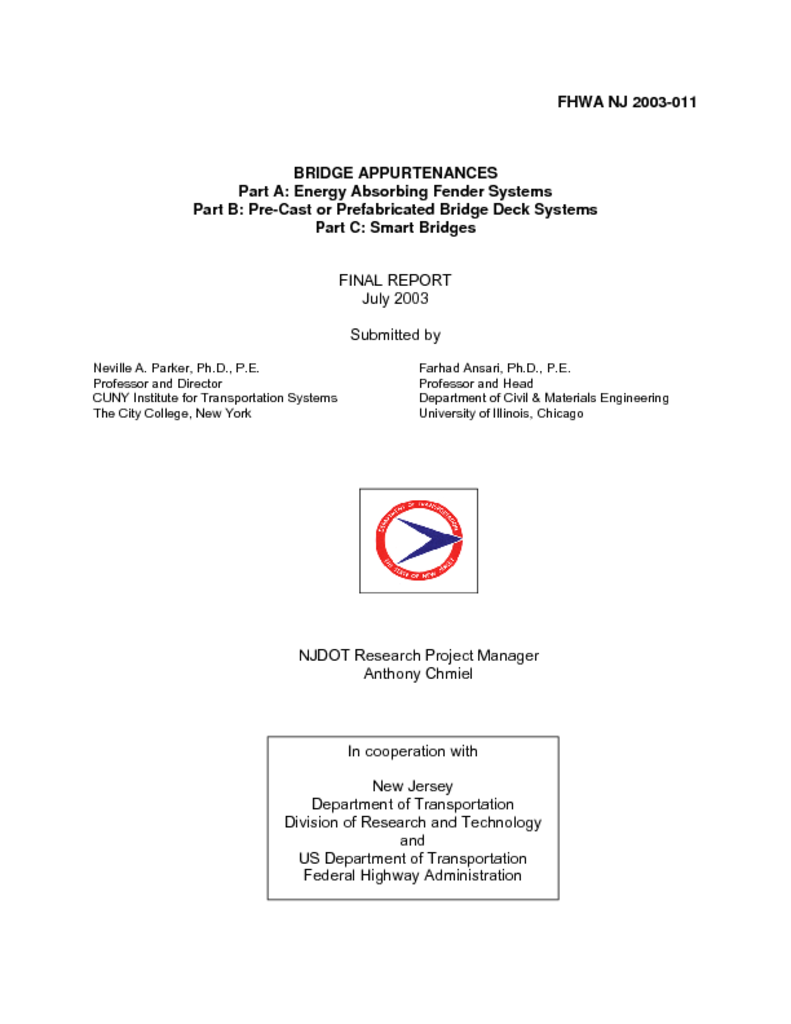This report presents the findings and recommendations for the following NJDOT?s technology transfer
projects:
Energy Absorbing Fender Systems
Existing bridge fender protective systems technology, used by other states and countries are grouped into six
main categories: 1) Pile supported; 2) Retractable; 3) Rubber; 4) Gravity; 5) Hydraulic/pneumatic; and 6)
Floating systems. A protection system composed of hardcore composite pile dolphins, composite tubular
piles with stay-in-place formwork surrounded by composite ultra-high molecular-weight faced fender
panels, was recommended as the state-of-the-art system for NJDOT, after rating six generic design
alternatives based on their life cycle costs.
Pre-Cast or Prefabricated Bridge Deck Systems
It was found that more than 50% of U.S. bridges are classified as pre-stresssed concrete structures. The study
concluded that precast bridge decks have several advantages over cast-in-place structures, including faster
construction schedules, longer service lives, and potentially greater cost efficiency. The use of precast bridge
decks in conjunction with new construction materials, such as high performance concrete and fiber-reinforced
composites was recommended.
Smart Bridges
It was found that nondestructive (NDT) methods enable fast, inexpensive and continuous monitoring of
reinforcement condition. However, determination of the extent of corrosion is complex and may lead to
misinterpretation of results, and to avoid this it was recommended that several NDT methods be combined
or used in tandem, for robust analysis and conclusion about corrosion of reinforcement steel.
Publication Category




